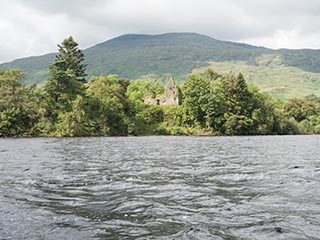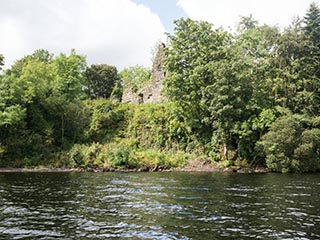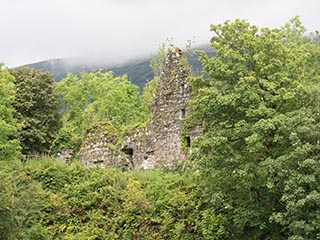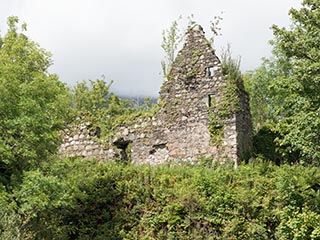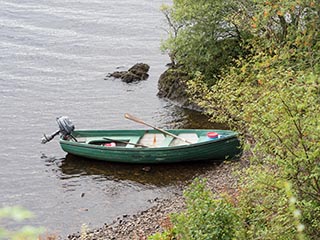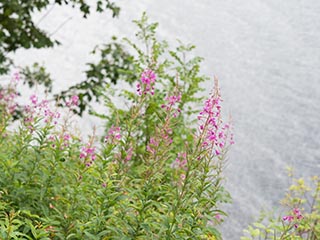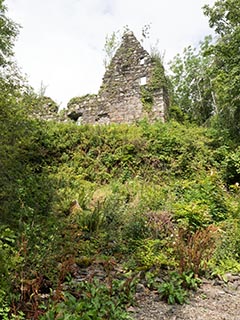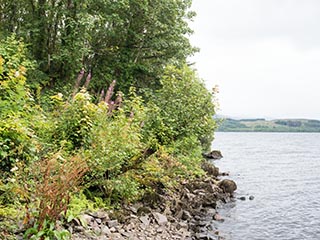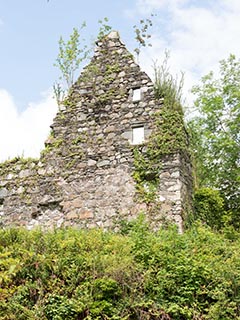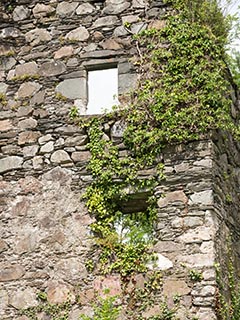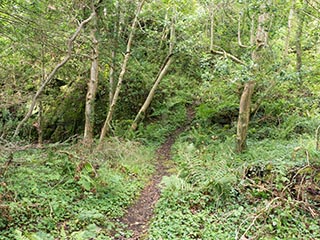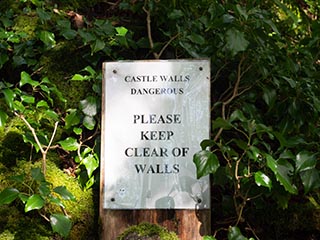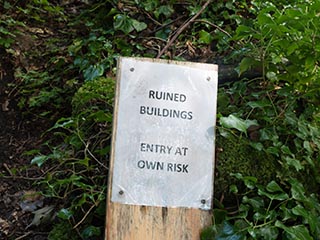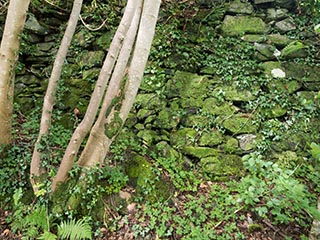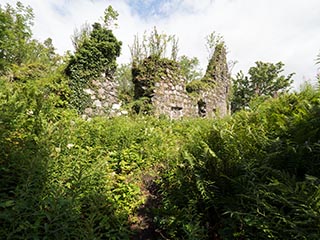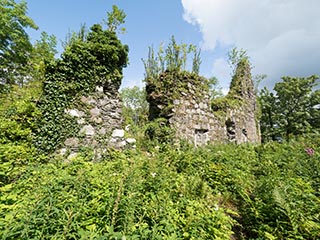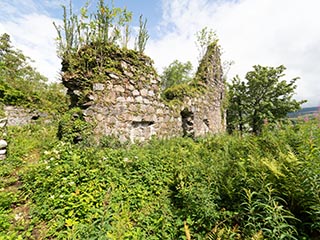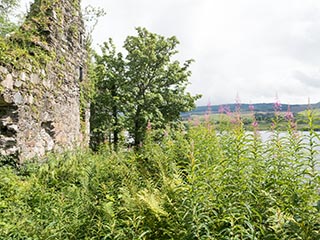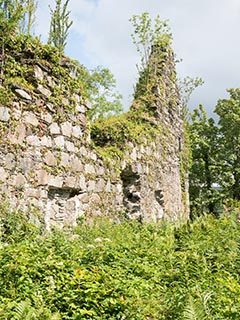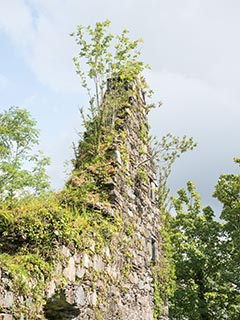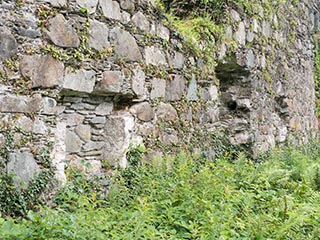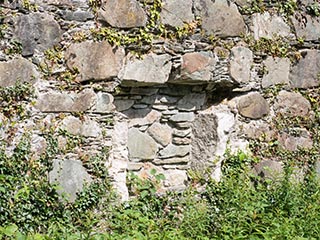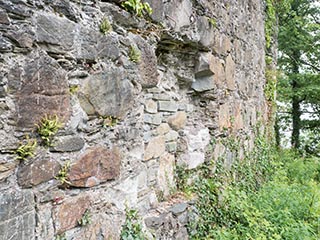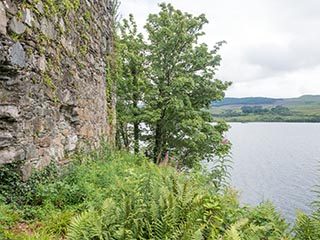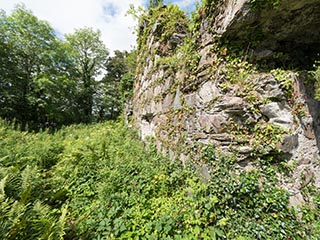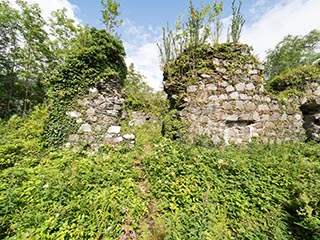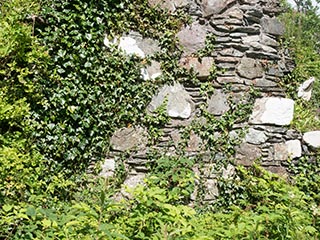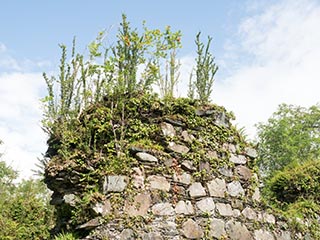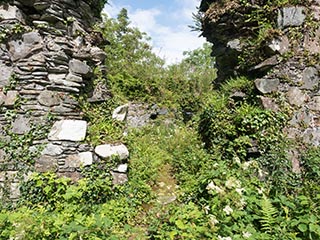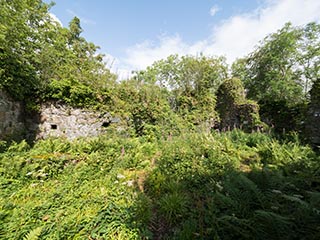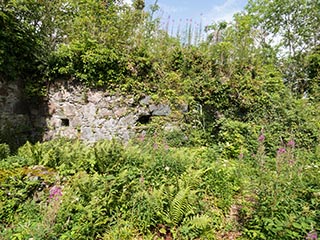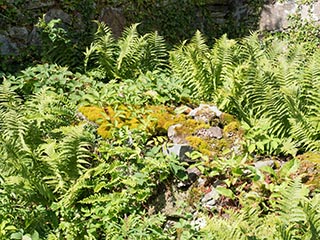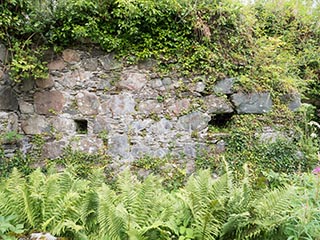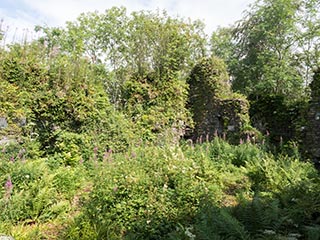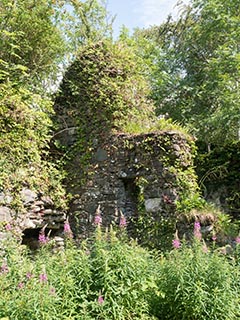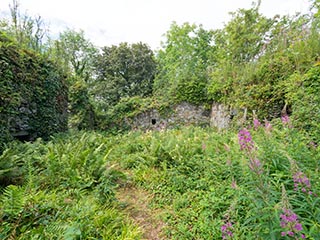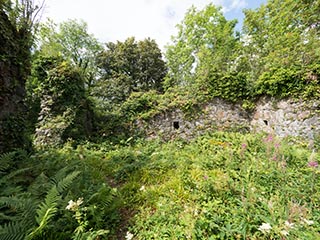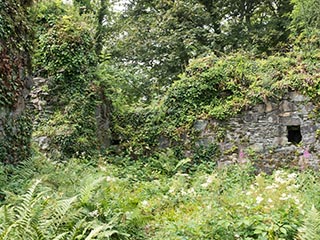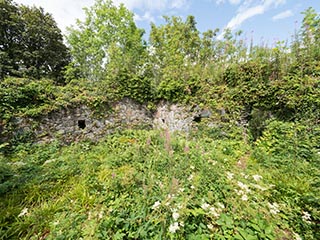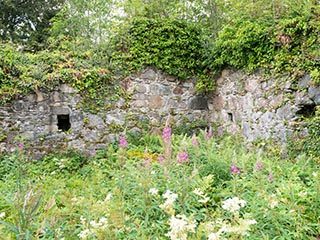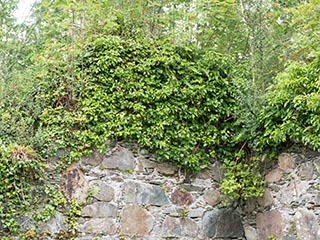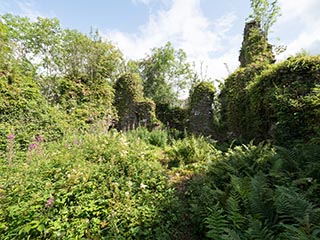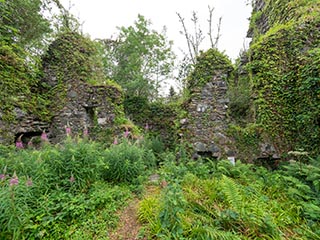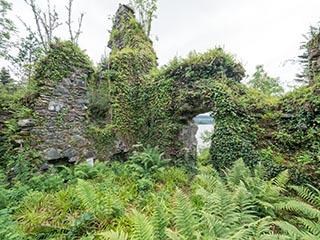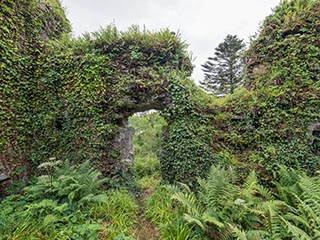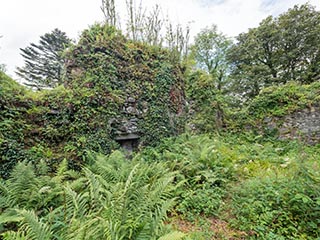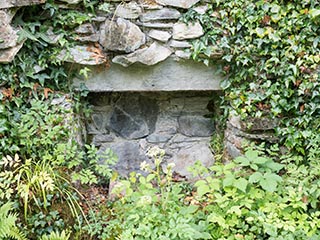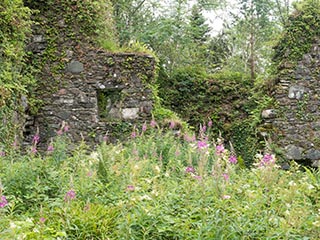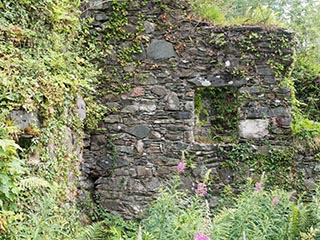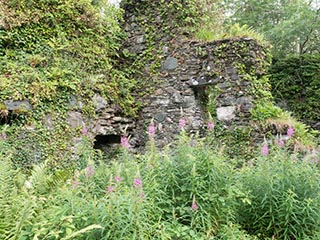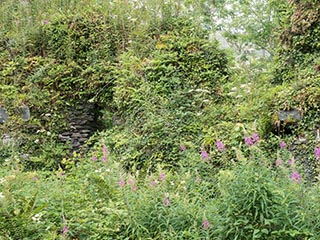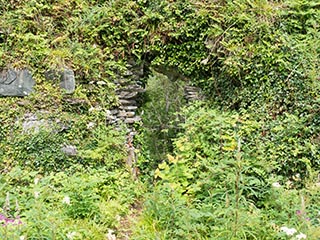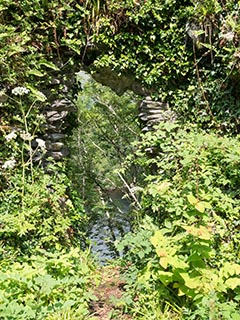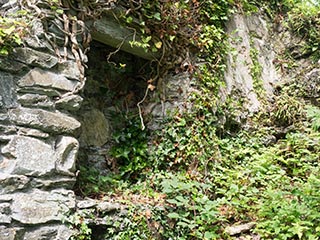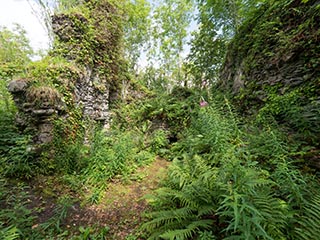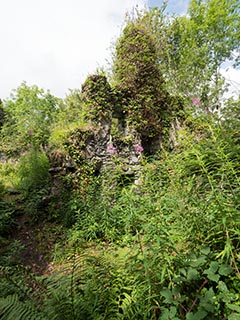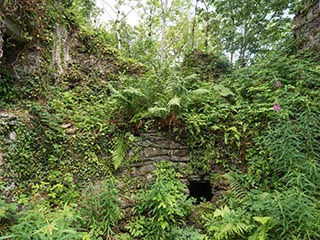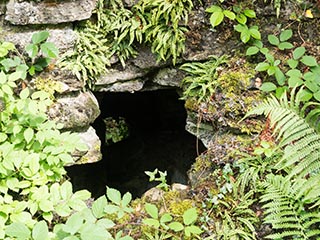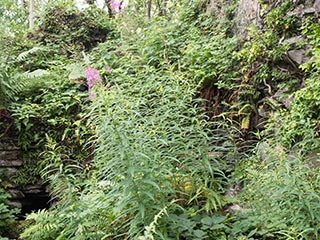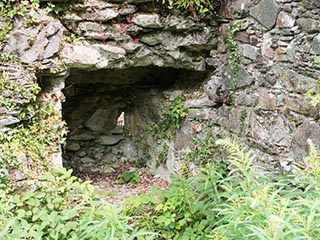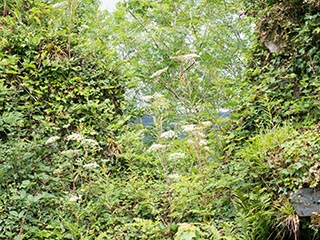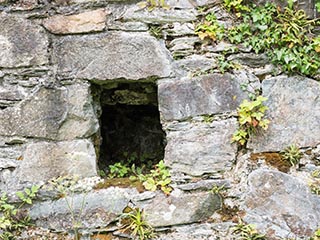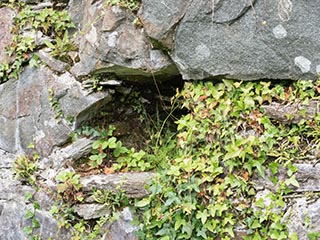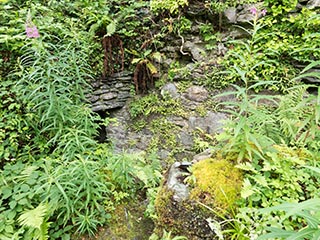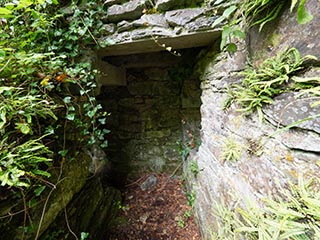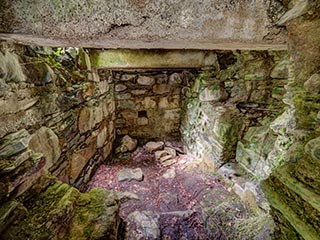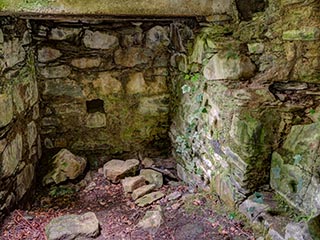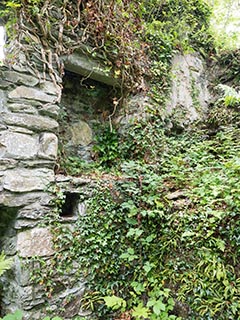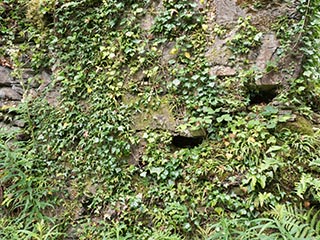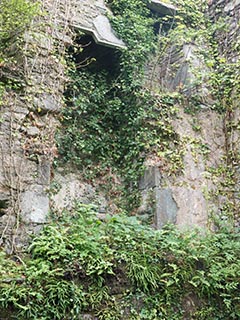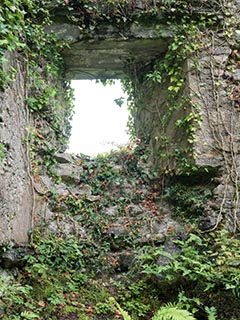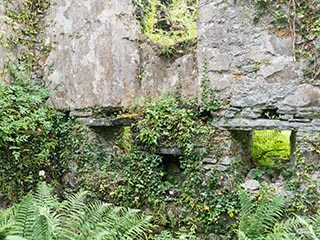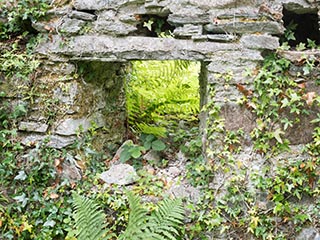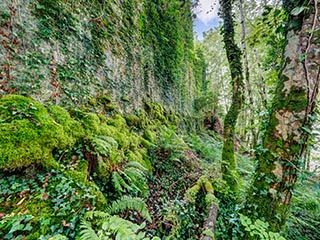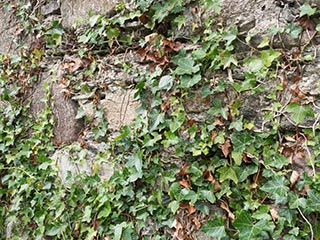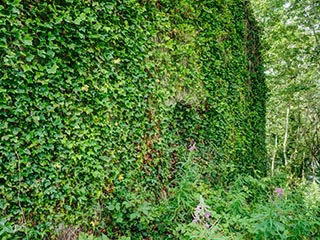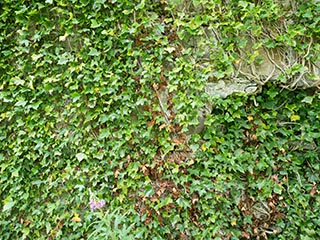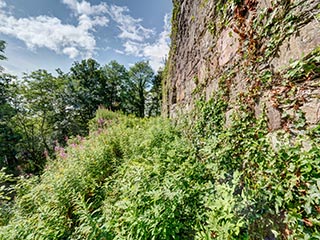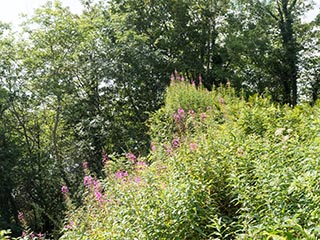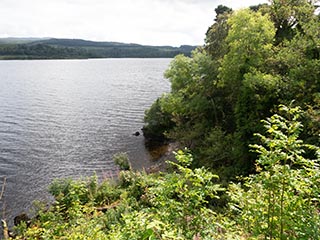Fraoch Eilean Castle stands on the highest part of the eponymous island in the northern end of Loch Awe. It is one of two ruined castles on Islands in the loch, the other being Innis Chonnel Castle. In the summer of 2019 I decided to hire a boat and explore the two castles.
I drove out to the loch from Glasgow. It rained heavily during my drive, and I worried that I might have to postpone my exploration, but the weather cleared just as I reached the boat hire place. It turned out to be a pleasant day, with some lengthy intervals of sunshine in the afternoon.
By the time I hired a boat and got onto the water, it was around 11:30. I decided to visit Fraoch Eilean first, since it was the closer of the two, and Innis Chonnel the following day, when I would be able to make an earlier start. An easy six kilometre voyage up the loch took me to the island. I took some distant photographs from the boat, then moored on a small shingle beach near the castle, on the east side of the island.
Fraoch Eilean is a small island, only about 180m long. It was a beautiful, peaceful place when I visited, with a variety of lush vegetation and wildflowers. Visitors were common enough to have worn a path to the castle through the undergrowth, but nobody disturbed my solitude while I was there.
I approached the castle from the south side. Some nearby signs displayed entirely reasonable warnings:
CASTLE WALLS DANGEROUS
PLEASE KEEP CLEAR OF WALLS
RUINED BUILDINGS
ENTRY AT OWN RISK
The castle was on the small side as castles go, and there wasn't a great deal left of the structure. According to Wikipedia it was abandoned some time before 1769, so the wooden parts such as roofs and floors had long since rotted away. What had once been the interior was now open to the sky. Much of the stonework had collapsed, and only one wall was still mostly intact.
I found a tiny enclosed chamber in one of the walls. I noticed that it had some concrete beams in the ceiling, which were probably added in recent years to support the wall above. In Scotland it is common practice to make such minimal repairs to stabilise historic ruins and prevent further collapse.
The land around the castle was covered in such thick, thorny undergrowth that walking around to see the northern side would have been a task of some difficulty. Rather than fight my way through, I took the boat around and moored on the northeast point of the island.
The northern side of the hill was much steeper than the southern, and the castle wall extended for some distance from the top to act as a retaining wall. This side of the castle was mostly obscured by the surrounding vegetation, and was in shadow, so it was difficult to get any decent photographs.
